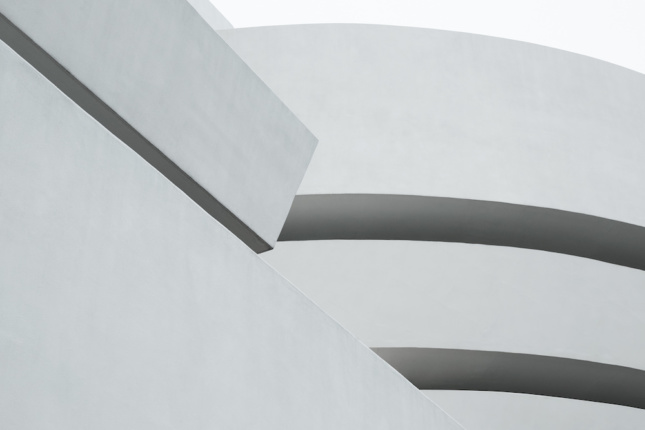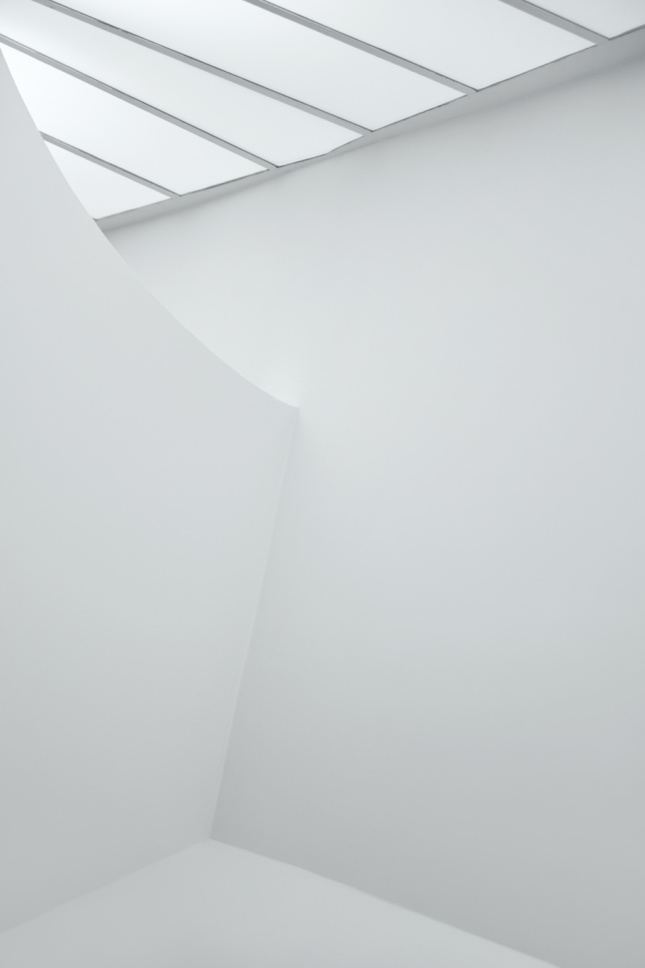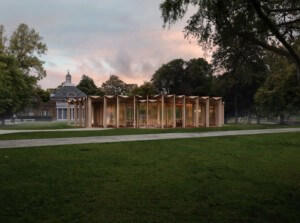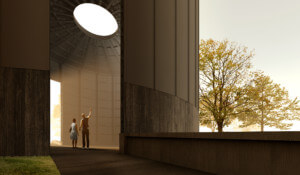What does it say about London-based clothing brand COS that it is targeting architects and designers? Its price points ($99 to $225 for a men’s dress shirt) are relatively accessible when compared to many other boutique or more explicitly luxury-oriented brands. At the same time, within the mass-market fast-fashion sector, COS has a different approach than other stores like Uniqlo or H&M (where dress shirts are more in the $30 range), which can tell us something about the brand and its ethos. Working in this sector, where does COS find its niche?
For COS, engagement has come through the design sphere; its target is the attendees of selective, high-end gatherings. In contrast, Uniqlo has partnered with MoMA, an institution that is trying harder everyday to cast as wide a net as possible, with celebrity-driven events like its controversial 2015 Bjork exhibition, or its apparent decision to get rid of permanent, discipline-specific galleries like architecture and design, in favor of cross-disciplinary shows with wider appeal. The Uniqlo-MoMA relationship includes the Japanese fashion brand’s sponsorship of free Fridays at the museum, as well as a line of collaborative T-shirts that are sold at the Fifth Avenue Uniqlo flagship store just a few doors down from MoMA in New York City.


COS’s involvement ranges from sponsoring Park Nights at London’s Serpentine, a series of programs in the annual pavilion, to site-specific installations at global design events such as Design Miami/ and Milan Design Week. A recent string of projects has moved the brand away from earlier collaborations that were simpler and fairly vague—such as a 2014 project at Salone del Mobile with Japanese design studio Nendo—toward more interactive, experiential installations that activate space and merge into the architectural.
In November 2017, COS and New York-based Snarkitecture presented Loop, where visitors to Seoul’s Gana Art Center gallery could place a white glass marble on a light- blue metal track, where it would descend to the gallery floor below. Similarly, London designers Studio Swine brought their Salone del Mobile installation New Spring to Miami for Design Miami/. There, visitors could play with special bubbles that fell from an arched sculpture and were filled with one of five scented mists. Next up is a collaboration with the Palm Springs-based artist Phillip K. Smith III in Milan, for which details are still pending.
While these installations might seem random, they make sense as an outreach and audience-building strategy for COS. Material and geometry are an important part of the COS brand, and in this sense, it shares DNA with modernism in architecture and design.
“Ornament and Crime,” by Austrian architect Adolf Loos, is one of the most important treatises on the role of decoration after the industrial revolution. Personally, Loos preferred to wear very simple English wools suits. “When the English set it upon themselves to rule the world, they freed themselves from the imitation of silly costumes that they had been condemned to by other nations, and imposed the primeval dress around the globe,” he once said, albeit extremely problematically by today’s standards. But as a material analysis of post-national modernism, it can be applied to understanding his work.
In his architecture, such as the iconic Villa Müller and its rich marble and wood surfaces that layer over one another through adjacent spaces in a raumplan, Loos preferred simple geometries with rich materials that let the texture become the ornament—one of the major tenets of Miesian modernism and the International Style. Similarly, for COS Creative Director Karin Gustafsson, “We are interested in research such as materials or finishes. We also talk a lot about tactility.”
But simplicity wasn’t just a stylistic choice for Loos. He also famously said in 1908 that “when I look back over past centuries and ask myself in which age I would prefer to have lived, my answer is, ‘in the present age.’” He believed that fashion and the reuse of older styles were an unnecessary infatuation with the past. Not surprisingly, he also was one of the pioneers of the modernist aesthetic, which abandoned ornament that he felt harkened back to a premodern sentimentality. To be thoroughly modern, one had to move beyond the past. For COS, modernity also comes from the timeless. “We are a fashion brand the focuses on well-made design and design that is made to last. It is timeless, it is about modernity,” Gustafsson said.


But Loos’s criticisms of older styles were also part of his commitment to the International project and his disdain for ornament, which he thought represented antiquated nationalism. As for COS, “We are a global brand,” COS CEO Marie Honda said. “We want to always represent this through our projects and activations.”
Recently, the brand released Creating Shapes, a book about fashion designer Usha Doshi, one of Gustafsson’s teachers at the Royal College of Art in London. “She is one of the links between the designers and pattern cutters,” Gustafsson told The Architect’s Newspaper. Here, we see another connection between the COS brand and the design world, where making and materials are in a constant feedback loop, and often designers become the connection between the world of material innovation and the world of form-making. Designers and architects alike are always in search of the newest things to form into a chair or the latest glass technique that might lead to a beautiful window.











